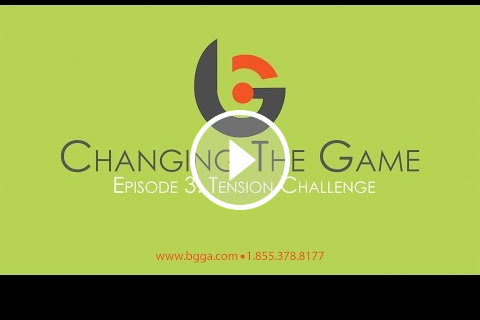There's two ways to measure your progress here. The first one is the more basic of the two. Simply tracking whether or not you stayed committed to your shot.
It's pretty straight forward if you're actually on the course. Just think about the last shot and check to see if you stayed committed to your target and swing. The easiest way to track this is just add that line on your scorecard, I like to call it EXECUTE. Did I execute my Think Box plan?
If you're on the driving range I would track this 10 shots at a time.
- Pre-select 10 different targets
- On each shot add the Think Box & Play Box to your pre-shot routine
- Track to see if you stayed committed and executed the plan with each shot
I think it's important to mention here that when I ask if you're staying committed, I'm not asking if you hit your target, or if the shot was even good. I'm asking Did you stay committed to your Think Box plan?
- Did you waffle on your club decision?
- Did you change your target midway through your pre-shot routine?
If you answered yes to either of these questions (or anything similar) then you didn't execute the plan. Work on going through your whole routine, making an achievable plan, and executing it!
Another way you can do some really solid self analysis is to weigh your expectation vs the outcome on these 10 shots. If you are finding that your expectation never matches up with the outcome it's probably time to start picking more conservative targets more in line with your abilities.
Practice #2: The Tension Scale
A huge key to several different areas of golf is awareness. Whether it's reading the breeze to see how much extra club you should take, or being aware that you are getting upset about a shot and not letting it bleed into later swings and potentially into later holes.
The specific spot we're talking about today is, you guessed it, TENSION!
Lot's of people don't realize that they may be gripping the club really hard, I mean white knuckling it. One way to test this is the exercise from Iain Highfield, Director of Mental Training at Bishops Gate Golf Academy.
The Tension Scale is a 0-10 scale measuring the tension in your hands, arms, and body. A 0 on the Tension Scale is super loose, barely able to stand up. Almost like your body is made out of cooked spaghetti noodles. A 10 on the Tension Scale looks, frankly, like the Hulk. Super stiff body, white knuckles on the club, probably a clenched jaw too! Here's how the drill works:
- While in your Think Box try to sense your current number on the Tension Scale. Say it out loud.
- Let go of your club bend slightly at the waist and shake all your tension out so you're at 0.
- Now count up to 10 slowly increasing your tension along the way until you max out.
- Hold that 10 on the Tension Scale for at least 5 seconds.
- Then slowly count back from 10 relaxing and work your way back down to 0 shaking out any remaining tension.
- Repeat that process once more.
- Now pick up your club and notice what your tension level is (should be a 1 or 2)
- Quickly move into your Play Box and execute your shot (should take 7 seconds or less).
Just like in Practice #1 I want you to pick out 10 targets and do this before each individual shot. To measure your progress here I want you to note on which shot (out of 10) you feel like you are able to consistently start swinging at a 1 or a 2 on the Tension Scale.
Here's a video of Iain working with one of his students on the this very drill.


